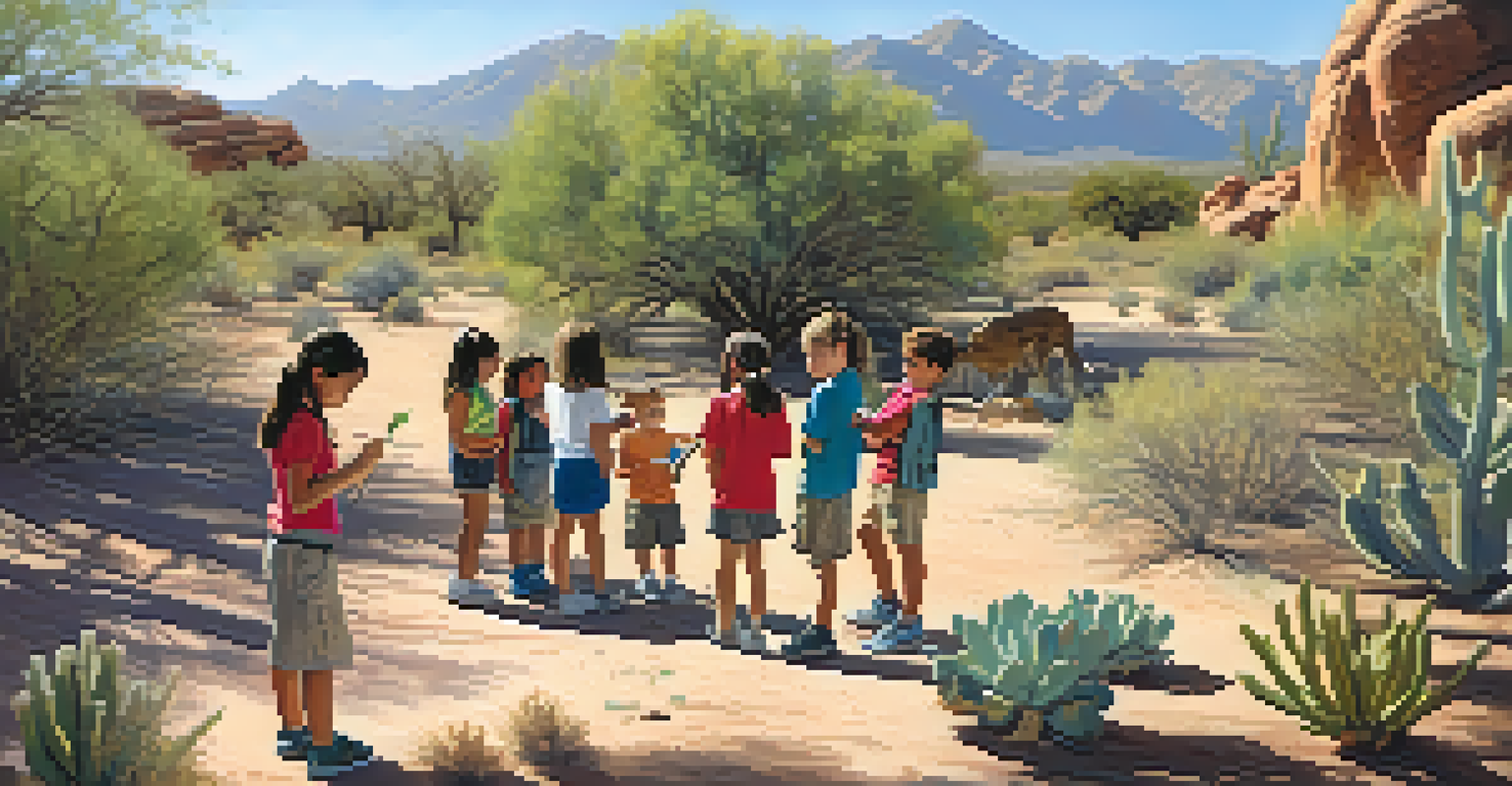The Importance of Habitat Preservation in Tucson's Sanctuaries

Understanding Habitat Preservation: A Vital Necessity
Habitat preservation is crucial for maintaining biodiversity, which refers to the variety of life in a particular ecosystem. In Tucson's sanctuaries, this means protecting native species that thrive in the unique desert environment. Without such efforts, we risk losing not only plants and animals but also the delicate balance that sustains life in these areas.
The greatest threat to our planet is the belief that someone else will save it.
When we talk about habitat preservation, it’s not just about saving cute animals or pretty plants; it’s about protecting entire ecosystems. Each species plays a role, whether it’s pollinating plants, controlling pests, or enriching the soil. For example, the desert tortoise is not only an iconic species but also an indicator of the health of its habitat.
Moreover, preserving habitats contributes to overall ecosystem services that benefit humans too. This includes cleaner air, water filtration, and even recreational spaces. When we protect these sanctuaries, we’re not just saving wildlife; we’re safeguarding our quality of life.
The Unique Ecosystem of Tucson's Sanctuaries
Tucson's sanctuaries are home to some of the most diverse ecosystems in the southwest United States. The Sonoran Desert, with its saguaro cacti, various shrubs, and unique wildlife, is a treasure trove of biodiversity. Each sanctuary, like the Saguaro National Park, offers distinct habitats that support myriad species, from birds to reptiles.

These ecosystems are adapted to thrive in harsh conditions, showcasing nature's resilience. For instance, the Gila Monster, a colorful lizard, has evolved to manage its water intake efficiently. This unique adaptation highlights the delicate balance of life in these habitats and the importance of preserving them for future generations.
Importance of Habitat Preservation
Habitat preservation is essential for maintaining biodiversity and ensuring the health of ecosystems that benefit both wildlife and humans.
Furthermore, these sanctuaries provide essential corridors for wildlife, allowing them to move freely in search of food and mates. As urban development encroaches, maintaining these corridors becomes increasingly vital to ensure species survival.
Threats to Habitat: Urbanization and Climate Change
Despite their importance, Tucson's sanctuaries face significant threats from urbanization. As the city grows, habitats are often fragmented or destroyed to make way for new developments. This not only impacts wildlife but also diminishes the natural beauty that residents and visitors cherish.
In every walk with nature one receives far more than he seeks.
Climate change adds another layer of complexity, altering weather patterns and threatening native species. Rising temperatures and changing rainfall patterns can disrupt breeding cycles and food availability for many animals. For example, the increased frequency of droughts can severely affect plant life, which in turn impacts herbivores and their predators.
To combat these threats, community involvement in preservation efforts is essential. By participating in local conservation programs, residents can help mitigate the effects of urbanization and climate change on these vital ecosystems.
Community Involvement: A Key to Success
Community involvement plays a pivotal role in habitat preservation efforts in Tucson. Local organizations and volunteers often come together to clean up natural areas, plant native species, and educate the public about the importance of biodiversity. This grassroots approach not only enhances conservation efforts but also fosters a sense of ownership and pride among residents.
Moreover, programs like citizen science initiatives allow community members to contribute to data collection and monitoring of local wildlife. This hands-on involvement helps raise awareness about the challenges these habitats face while empowering individuals to make a difference.
Community Involvement Matters
Active participation from the local community in conservation efforts fosters a sense of ownership and can lead to significant policy changes.
When people feel connected to their local environment, they are more likely to advocate for its protection. This collective action can lead to significant policy changes, ensuring that Tucson's natural sanctuaries are safeguarded for generations to come.
Educational Programs: Raising Awareness
Educational programs in Tucson's sanctuaries play a vital role in promoting habitat preservation. Local schools and organizations often collaborate to create hands-on learning experiences for students, teaching them about local ecosystems and the importance of conservation. These programs can spark a passion for nature that lasts a lifetime.
Field trips to sanctuaries allow students to explore the unique flora and fauna right in their backyard. By witnessing the beauty and complexity of these habitats firsthand, young people can develop a deeper appreciation for the environment. This kind of engagement is crucial for fostering future environmental stewards.
Additionally, workshops and public lectures open to the community further promote awareness about the local ecosystem. When residents understand the challenges faced by their natural surroundings, they are more likely to take action to help protect them.
Funding and Support: The Role of Grants and Donations
Funding is a critical component of habitat preservation efforts in Tucson. Grants from government agencies and non-profit organizations provide essential resources for conservation projects. These funds help support research, restoration efforts, and educational programs that benefit both wildlife and the community.
Additionally, donations from individuals and local businesses can make a significant difference. By contributing to local conservation organizations, community members can directly support initiatives focused on protecting Tucson's unique ecosystems. Every dollar counts when it comes to preserving these vital habitats.
Funding Supports Conservation Efforts
Grants and donations are crucial for funding habitat preservation projects, enabling research and educational initiatives that protect Tucson's unique ecosystems.
Moreover, fundraising events such as nature walks or benefit concerts not only raise money but also foster community spirit. These gatherings create an opportunity for people to come together, celebrate nature, and show their commitment to habitat preservation.
The Future of Tucson's Sanctuaries: A Call to Action
Looking ahead, the future of Tucson's sanctuaries depends on our collective actions today. As urban pressures and environmental changes continue to challenge these ecosystems, it is more important than ever to commit to preservation efforts. We all have a role to play, whether through volunteering, advocating for policies, or simply spreading awareness.
The beauty and diversity of Tucson's natural sanctuaries are not just for us to enjoy; they are essential for the health of our planet. By prioritizing habitat preservation, we ensure that future generations can experience the wonder of these ecosystems. Imagine telling your children or grandchildren about the unique species that call Tucson home.

In essence, preserving habitats is not just about saving wildlife; it’s about sustaining life itself. Let’s work together to protect these precious resources, ensuring that Tucson’s sanctuaries thrive well into the future.